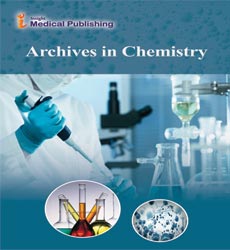A intity puri ication Generally Involves Macromolecules
Xiaojuan Zhang *
National Key Laboratory of Biochemical Engineering, Institute of Process Engineering, Chinese Academy of Sciences, Beijing, PR China
*Corresponding author: Xiaojuan Zhang, National Key Laboratory of Biochemical Engineering, Institute of Process Engineering, Chinese Academy of Sciences, Beijing, PR China; Email: Zhang25@gmail.com
Citation: Zhao X (2021) Affinity Purification Generally Involves Macromolecules. Affinity Purification Generally Involves Macromolecules Vol.2 No.
3:e004
Received date: June 04, 2021; Accepted date: June 19, 2021; Published date: June 26, 2021
Introduction
Proteins and other macromolecules of interest are often purified from crude extracts or other complex mixtures by a spread of methods. Selective precipitation is probably the only method for separating one sort of macromolecule from another. Most purification methods, however, involve some sort of chromatography whereby molecules in solution (mobile phase) are separated supported differences in chemical or physical interaction with a stationary material (solid phase). Gel filtration (also called size-exclusion chromatography or SEC) uses a porous resin material to separate molecules supported size (i.e., physical exclusion). In natural process chromatography, molecules are separated consistent with the strength of their overall ionic interaction with a solid phase material (i.e., nonspecific interactions). Against this , affinity chromatography (also called affinity purification) makes use of specific binding interactions between molecules. a specific ligand is chemically immobilized or “coupled” to a solid support in order that when a posh mixture is omitted the column, those molecules having specific binding affinity to the ligand become bound. After other sample components are washed away, the bound molecule is stripped from the support, leading to its purification from the first sample. Each specific affinity system requires its own set of conditions and presents its own peculiar challenges for a given research purpose. Other Protein Methods articles describe the factors and conditions related to particular purification systems (see links in side bar near the top of this page). Nevertheless, the overall principles involved are an equivalent for all ligand- target binding systems, and these concepts are the main target of this overview. The earliest sorts of affinity chromatography were actually developed by immune chemists. In 1951 Campbell, Luescher and Lerman developed antigen–cellulose columns to be used in isolating specific antibodies, a separation that would not be achieved unless one could cash in of the affinity of the antibody for its specific antigen. The conjugation of an antigen to a solid matrix was called an immune adsorbent and can be further described within the section on immune adsorbents. In 1968, Cuatrecasas, Wilchek and Anfinsen applied this idea to the isolation of enzymes and introduced the term affinity chromatography. Application of the technique exploded not only because the generality of the approach became clear, but also because a replacement solid support supported agarose with appropriate chemistry for coupling many sorts of ligands was introduced. Since then this system has had extensive application altogether aspects of the biological sciences. Recently, the utilization of affinity chromatography has been integrated with High-Pressure Liquid Chromatography (HPLC) systems to mix the specificity of affinity chromatography with the speed and sensitivity of HPLC. This has been extended to incorporate high-pressure immunoaffinity chromatography. One area that has been under-exploited is that the use of specific antibodies to isolate biological materials likes growth factors that are produced at low concentrations in cell culture. Affinity chromatography which is understood as a liquid chromatographic technique for separation and analysis of biomolecules supported their biological functions or individual structures has become increasingly important and useful separation method in pharmaceutical science, biochemistry, biotechnology and ecology in recent years. This system is particularly referred to as the foremost specific and effective technique for protein purification. Separation of the biomolecules is predicated on highly specific biological interactions between two molecules, like enzyme and substrate. These interactions, which are typically reversible, are used for purification by placing one among the interacting molecules, mentioned as affinity ligand, onto a solid matrix to make a stationary phase while the target molecule is within the mobile phase. Any component are often used as a ligand to purify its respective binding partner. Some typical biological interactions.
© Copyright iMedPub | This article is available from: https://www.imedpub.com/archives-in-chemistry/
Open Access Journals
- Aquaculture & Veterinary Science
- Chemistry & Chemical Sciences
- Clinical Sciences
- Engineering
- General Science
- Genetics & Molecular Biology
- Health Care & Nursing
- Immunology & Microbiology
- Materials Science
- Mathematics & Physics
- Medical Sciences
- Neurology & Psychiatry
- Oncology & Cancer Science
- Pharmaceutical Sciences
